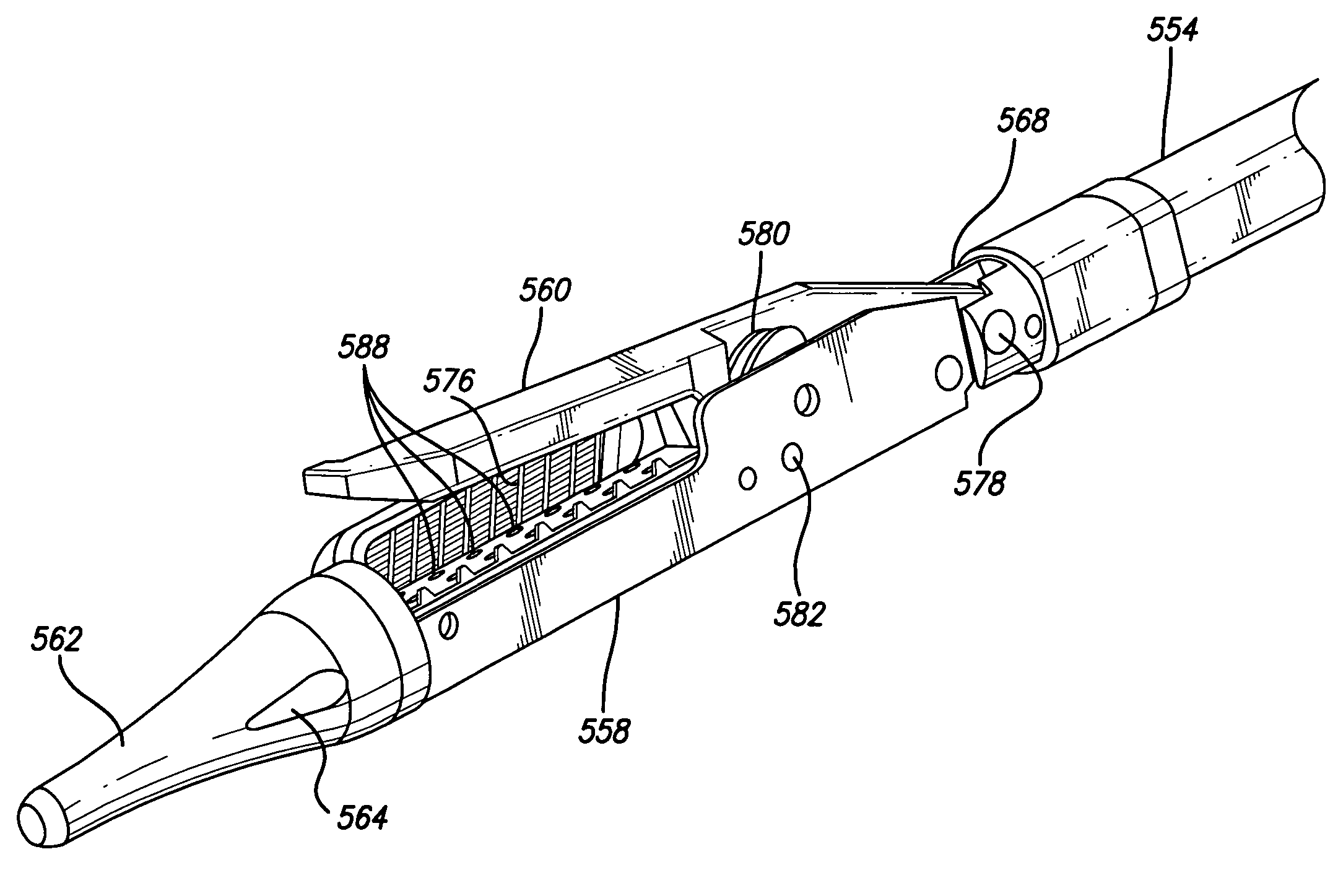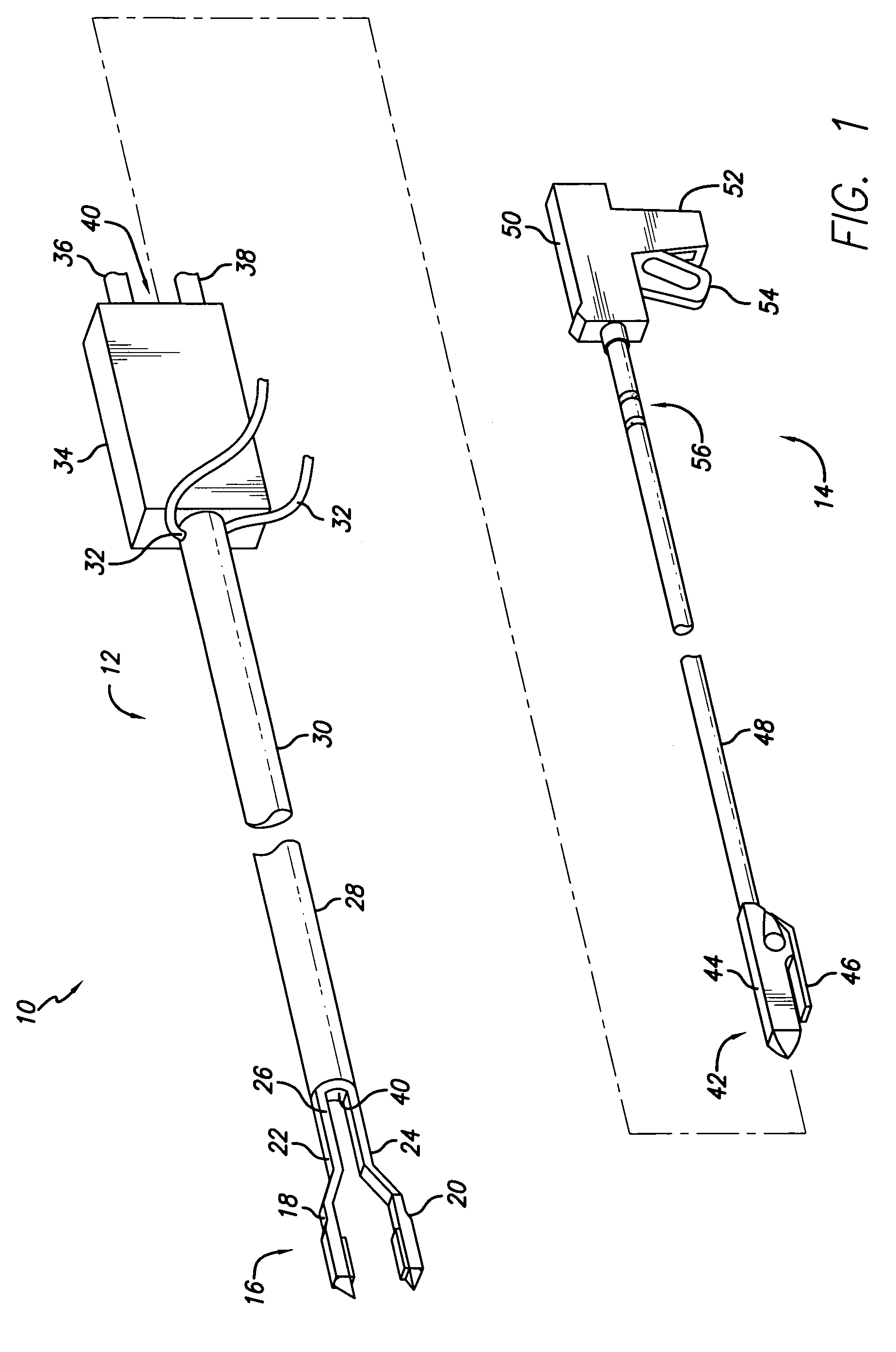Single fold device for tissue fixation
a single-fold device and tissue fixation technology, applied in the field of medical equipment and methods, can solve the problems of few, if any, interventional options for patients who are considered obese or moderately obese, and achieve the effects of preventing kinking or pinching of tubes, preventing rotation, and maintaining the stability of the stapler assembly
- Summary
- Abstract
- Description
- Claims
- Application Information
AI Technical Summary
Benefits of technology
Problems solved by technology
Method used
Image
Examples
Embodiment Construction
[0093]A system for tissue approximation and fixation is described which may be utilized for approximating tissue regions from within a hollow body organ, such as the stomach, esophageal junction, and other portions of the gastrointestinal tract. The system may be advanced within a body through a variety of methods, e.g., transorally, transanally, endoscopically, percutaneously, etc., to create one or several divisions or plications within the hollow body organ. At least two devices may be utilized as part of the system, a tissue acquisition and folding system and a tissue stapling or fixation system, although it is contemplated that both devices can be integrated into a single mechanism. Each of these devices may be configured to efficiently operate with one another to provide optimal methods and devices for at least acquiring, approximating, and stapling regions of tissue from within the hollow body organ in a minimally invasive manner.
[0094]Turning now to the figures, the system w...
PUM
| Property | Measurement | Unit |
|---|---|---|
| volume | aaaaa | aaaaa |
| diameter | aaaaa | aaaaa |
| volume | aaaaa | aaaaa |
Abstract
Description
Claims
Application Information
 Login to View More
Login to View More - R&D
- Intellectual Property
- Life Sciences
- Materials
- Tech Scout
- Unparalleled Data Quality
- Higher Quality Content
- 60% Fewer Hallucinations
Browse by: Latest US Patents, China's latest patents, Technical Efficacy Thesaurus, Application Domain, Technology Topic, Popular Technical Reports.
© 2025 PatSnap. All rights reserved.Legal|Privacy policy|Modern Slavery Act Transparency Statement|Sitemap|About US| Contact US: help@patsnap.com



